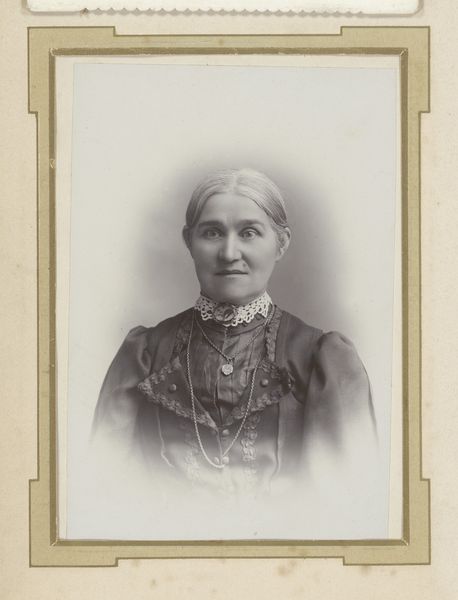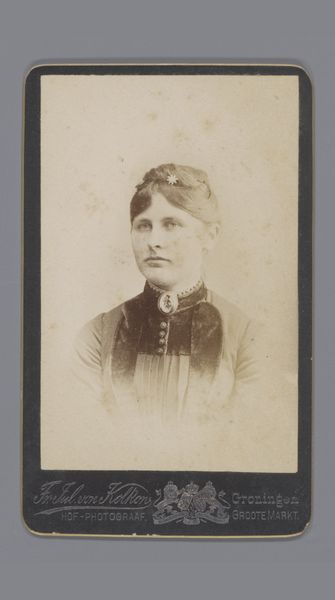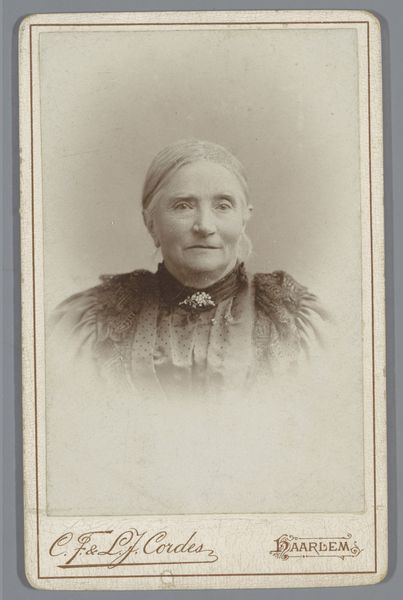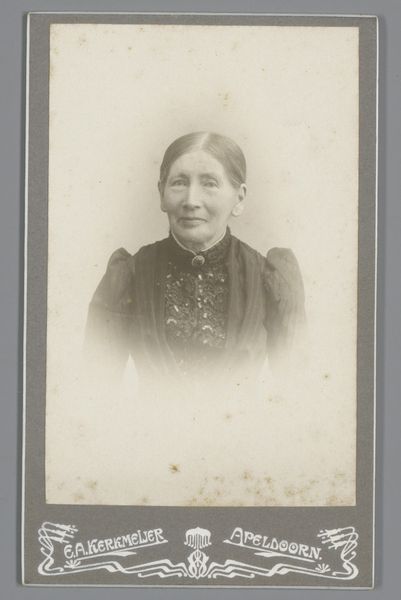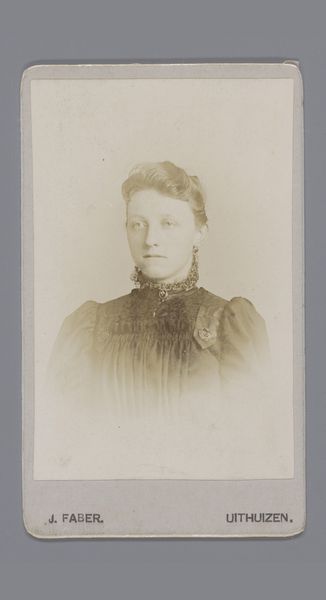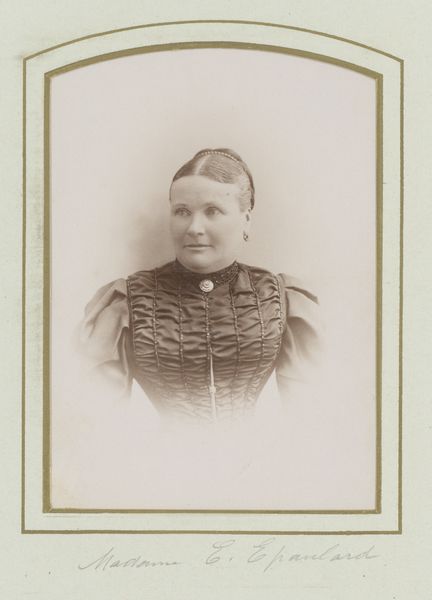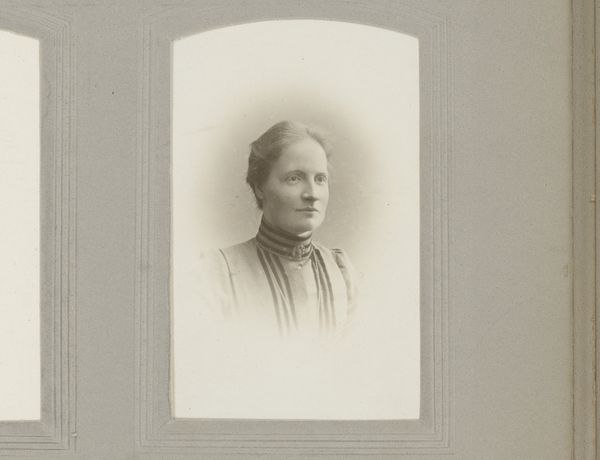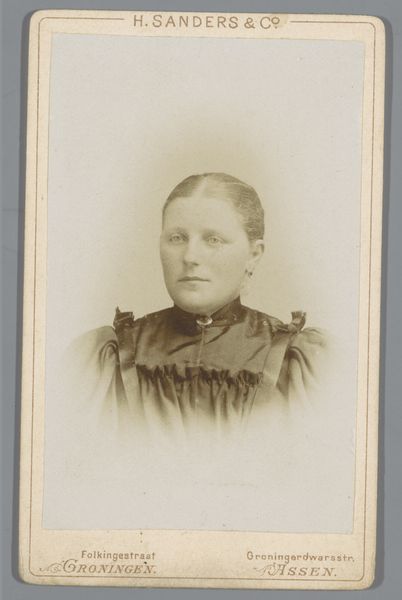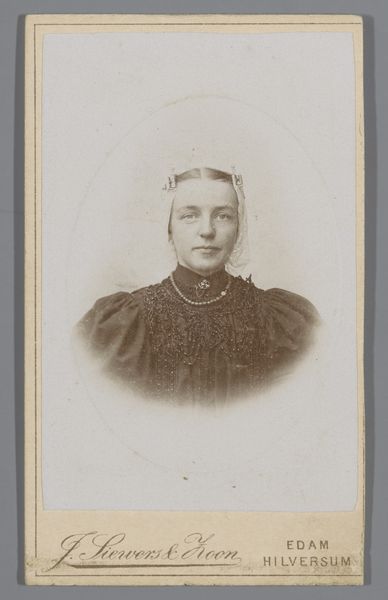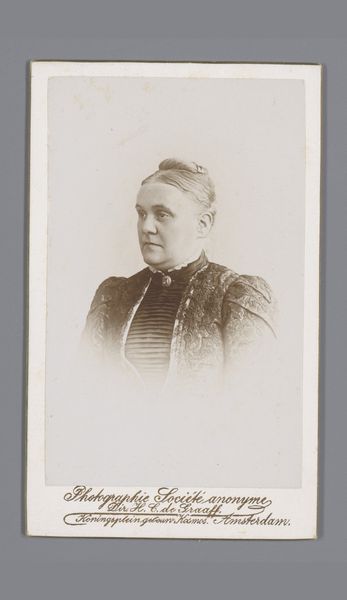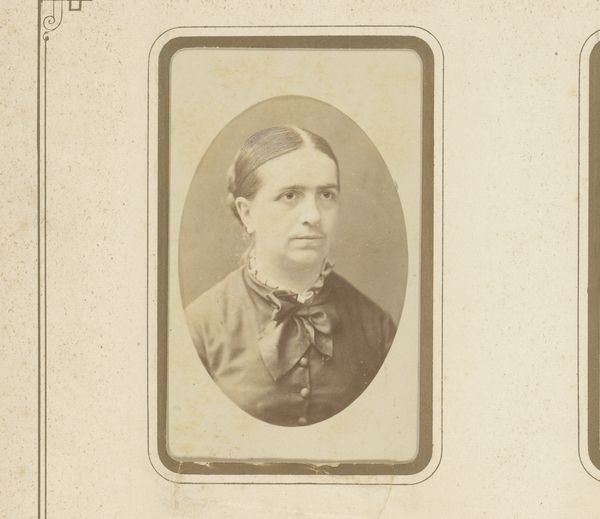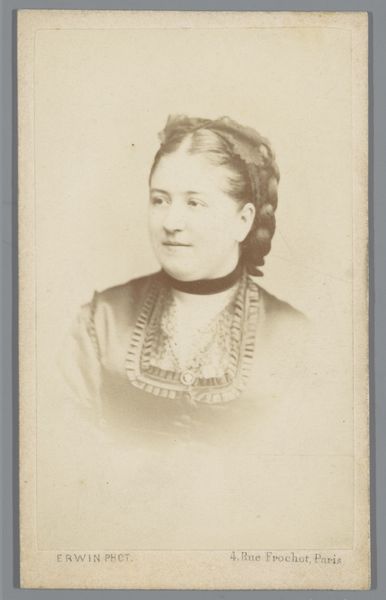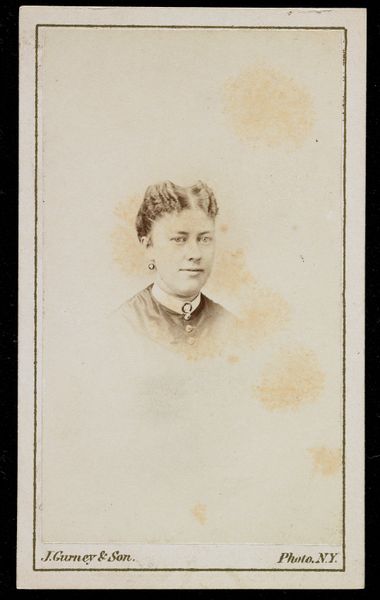
photography
#
portrait
#
photography
#
realism
Dimensions: height 150 mm, width 100 mm
Copyright: Rijks Museum: Open Domain
Albert Greiner made this portrait of an unknown woman sometime in the mid-19th century, using photography. In this period, the wet collodion process was typical. This involved coating a glass plate with chemicals, exposing it in the camera while still wet, and then developing it immediately. The resulting image, printed on paper, has a soft, almost ethereal quality due to the process's inherent limitations and the era’s aesthetic preferences. The laborious procedure required a deep understanding of chemistry and optics, placing the photographer somewhere between scientist and craftsman. In the context of labor, consider the time and skill involved, not just in taking the photograph, but also in the preparation and development. While photography democratized portraiture, making it more accessible than painting, it still represented a significant investment for the sitter and the photographer alike. The rise of photography studios also created new forms of labor, impacting social dynamics and visual culture in profound ways. Considering photography as a craft helps us appreciate its complex history and the labor involved in its making.
Comments
No comments
Be the first to comment and join the conversation on the ultimate creative platform.
